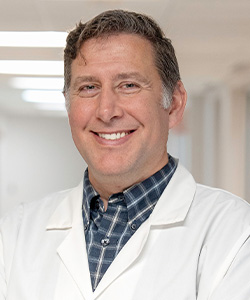Building a stronger emergency department, one connection at a time

After years of working in the Florida heat, treating everything from tropical illnesses to traumatic injuries, I wanted a challenge that would allow me to help people in an area like the one where I grew up. A challenge that would let me make a deeper impact in a close-knit community.
I recently relocated from central Florida, where I worked in several busy emergency departments. Now, I’m excited to bring my experience and passion for emergency medicine to the area as the Emergency Department Trauma Director at Bothwell Regional Health Center.
One of my biggest goals in this role is to improve the time people spend in the department and patient care. At Bothwell, every minute matters. When a patient comes in with a serious injury or illness, fast and effective care can make all the difference. I plan to work with our nurses, doctors and EMS crews to make sure patients are seen and treated as quickly and safely as possible.
When I started working in Bothwell’s Emergency Department I found that there were several initiatives underway to improve patient experience. These were oriented toward the goal of improving throughput, which is the time it takes patients to move through the department, from arrival to departure.
Improving this time enables patients to see a provider more rapidly, which will allow us to identify patients with time critical diagnoses as quickly as possible. These are conditions such as trauma, cardiac arrest and stroke where minutes saved by being seen quickly can have a significant impact on the survivability of the patient or the quality of life after being treated for the condition.
I trained at a hospital that is a busy Level 1 trauma and stroke center that ranked consistently as No. 1 or No. 2 in stroke volume among all hospitals in its nationwide group. I plan to bring the lessons and practices that I learned there to Bothwell Regional Health Center.
I care deeply about trauma and trauma preparedness. Serious injuries can happen in smaller communities like Sedalia. Because we are farther from larger hospitals, it is incredibly important to have a well-practiced trauma team that is ready to respond to the entire spectrum of injuries.
Our team recently completed a week of trauma simulations with physicians, nursing staff and nursing students. We saw the results of this training almost immediately as the trauma alerts that we started seeing just later in the week ran much more like the well-oiled machine that a trauma response should be. I plan to work with leadership and the team to organize more training, practice emergency department drills and build strong connections with the nearby higher level trauma centers to ensure that we provide top-quality care to the community.
One of the things I find rewarding about working in a smaller community is the chance to build genuine connections with the community. I previously worked in an area with a population of approximately 400,000 people. We had over 130 emergency beds spread across eight facilities. The likelihood that I would ever see the same patient more than one time was extremely low.
In the six months I’ve been working at Bothwell, I have gotten to know patients that have come into the Emergency Department more than once, and I see coworkers’ children playing high school sports in the local newspaper. I feel like I’m a part of the fabric that holds Sedalia and Pettis County together.
Since starting work at Bothwell, I am amazed by how kind and welcoming everyone has been. It is evident that this is a community that cares deeply for one another, and I am privileged to be part of it.
Dr. Nathan George is a board-certified Emergency Medicine physician. He earned his medical degree at the University of Illinois at Peoria College of Medicine. Prior to joining the Bothwell team, he completed residency and worked as an attending physician for the Ocala Regional health system in Ocala, Florida. He grew up in Topeka, Kansas, and is happy to be back in rural America serving others.
